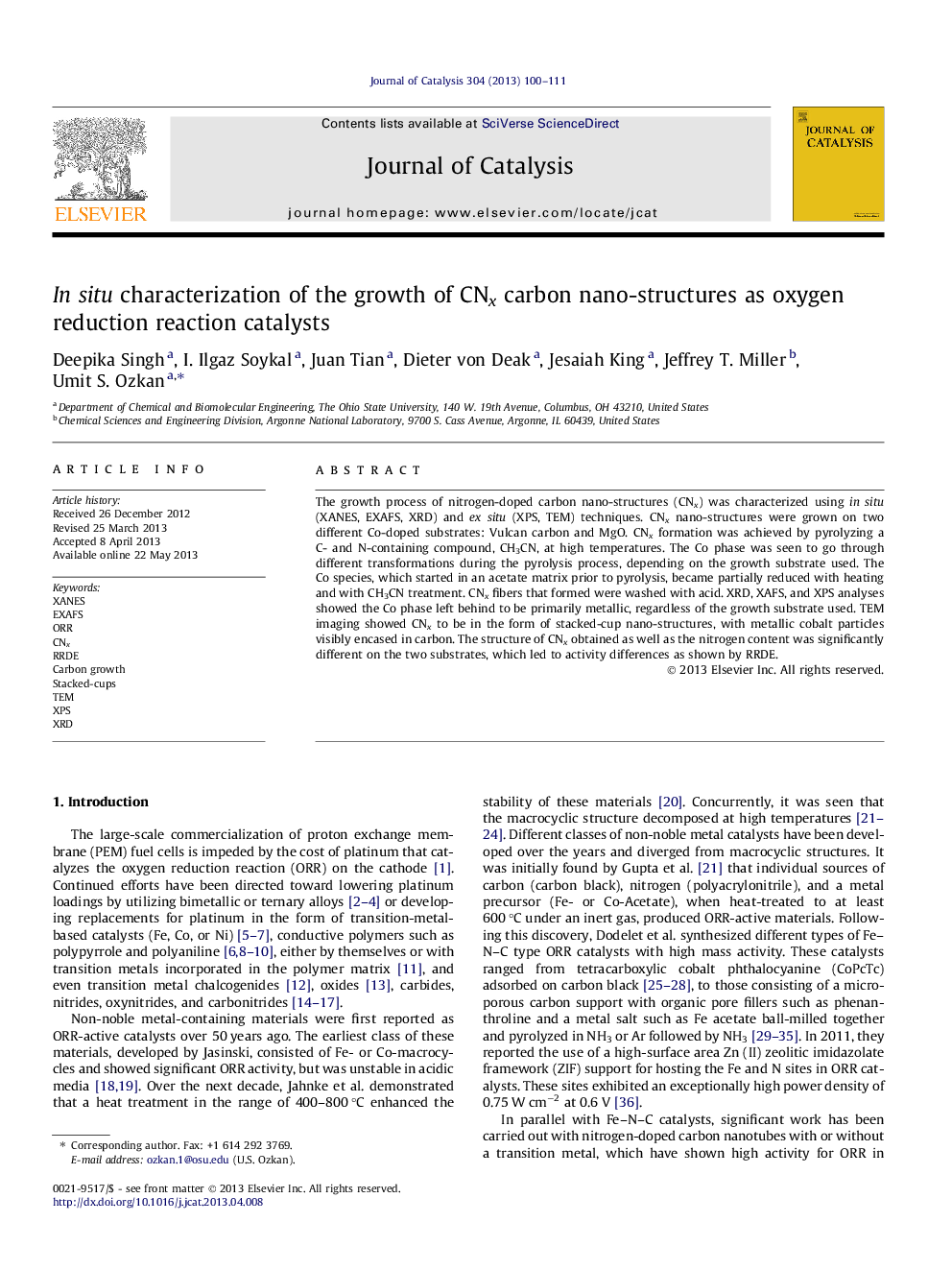| Article ID | Journal | Published Year | Pages | File Type |
|---|---|---|---|---|
| 61227 | Journal of Catalysis | 2013 | 12 Pages |
•The growth process of CNx was characterized using in situ techniques.•Co-doped VC and MgO supports were used as growth substrates in acetonitrile pyrolysis.•Cobalt phase went through different transformations for the two substrates.•Effect of support was evident on the structure of CNx and its nitrogen content.•This led to differences observed in their ORR activity.
The growth process of nitrogen-doped carbon nano-structures (CNx) was characterized using in situ (XANES, EXAFS, XRD) and ex situ (XPS, TEM) techniques. CNx nano-structures were grown on two different Co-doped substrates: Vulcan carbon and MgO. CNx formation was achieved by pyrolyzing a C- and N-containing compound, CH3CN, at high temperatures. The Co phase was seen to go through different transformations during the pyrolysis process, depending on the growth substrate used. The Co species, which started in an acetate matrix prior to pyrolysis, became partially reduced with heating and with CH3CN treatment. CNx fibers that formed were washed with acid. XRD, XAFS, and XPS analyses showed the Co phase left behind to be primarily metallic, regardless of the growth substrate used. TEM imaging showed CNx to be in the form of stacked-cup nano-structures, with metallic cobalt particles visibly encased in carbon. The structure of CNx obtained as well as the nitrogen content was significantly different on the two substrates, which led to activity differences as shown by RRDE.
Graphical abstractFigure optionsDownload full-size imageDownload high-quality image (83 K)Download as PowerPoint slide
